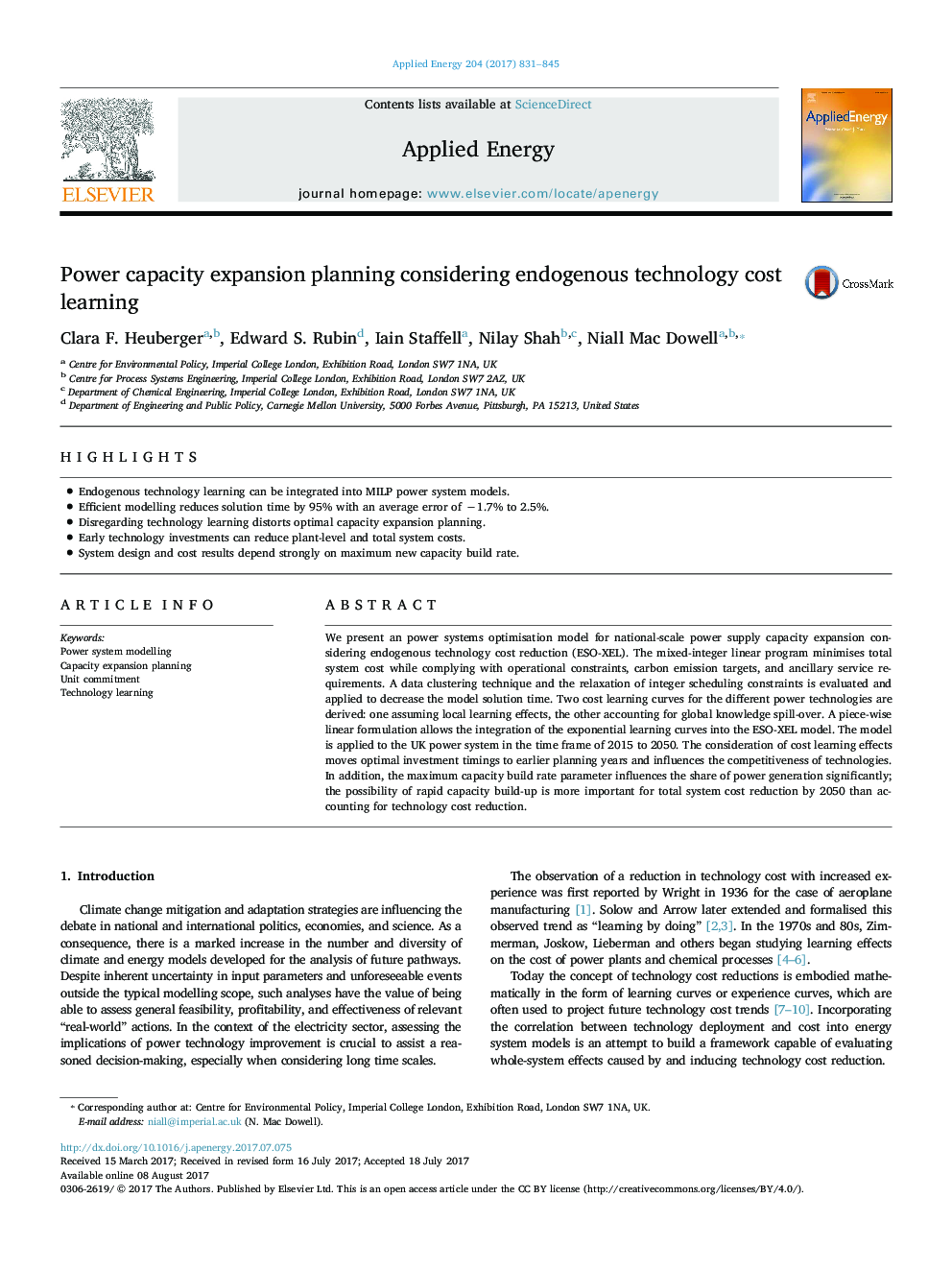| Article ID | Journal | Published Year | Pages | File Type |
|---|---|---|---|---|
| 4916097 | Applied Energy | 2017 | 15 Pages |
â¢Endogenous technology learning can be integrated into MILP power system models.â¢Efficient modelling reduces solution time by 95% with an average error of â1.7% to 2.5%.â¢Disregarding technology learning distorts optimal capacity expansion planning.â¢Early technology investments can reduce plant-level and total system costs.â¢System design and cost results depend strongly on maximum new capacity build rate.
We present an power systems optimisation model for national-scale power supply capacity expansion considering endogenous technology cost reduction (ESO-XEL). The mixed-integer linear program minimises total system cost while complying with operational constraints, carbon emission targets, and ancillary service requirements. A data clustering technique and the relaxation of integer scheduling constraints is evaluated and applied to decrease the model solution time. Two cost learning curves for the different power technologies are derived: one assuming local learning effects, the other accounting for global knowledge spill-over. A piece-wise linear formulation allows the integration of the exponential learning curves into the ESO-XEL model. The model is applied to the UK power system in the time frame of 2015 to 2050. The consideration of cost learning effects moves optimal investment timings to earlier planning years and influences the competitiveness of technologies. In addition, the maximum capacity build rate parameter influences the share of power generation significantly; the possibility of rapid capacity build-up is more important for total system cost reduction by 2050 than accounting for technology cost reduction.
